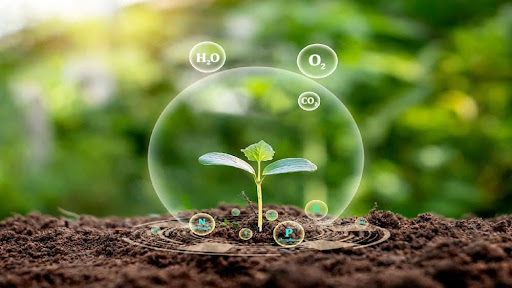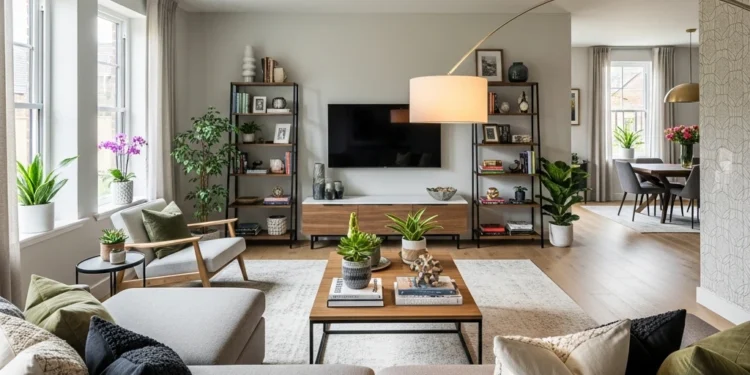Home is where the heart is. Except, it’s more than that. Sure, it’s a place, but it’s also a reflection of who you are and how you choose to live. In recent years, many homeowners have become increasingly aware of how their lifestyle choices impact their family’s wellbeing and the broader environment. Creating a healthier, sustainable home isn’t just about aesthetics; it involves conscious decisions about the products you use, the way you maintain your living spaces, and the energy you consume.
With simple yet thoughtful actions, it’s possible to significantly enhance your home’s sustainability, comfort, and health. Let’s explore practical, achievable ways to transform your home into a healthier, more sustainable haven.
Air Quality: The Invisible Foundation of Health
Indoor air quality profoundly affects our daily lives, even though it’s often overlooked. Common household pollutants such as dust, mould, volatile organic compounds (VOCs), and chemicals from cleaning products can silently affect respiratory health, trigger allergies, and reduce overall wellbeing.
Improving air quality begins with thoughtful cleaning routines and using eco-friendly products. Opt for natural cleaning solutions—such as vinegar, baking soda, or essential oils—which are effective yet gentle on your home’s atmosphere. Regularly ventilating your spaces, particularly in kitchens and bathrooms, helps remove pollutants and maintain fresh air circulation. If you notice unpleasant odors or slow drains, it might be a sign you need your septic tank pumped. Addressing septic issues promptly can prevent further complications and help maintain a cleaner, healthier home environment..
Additionally, incorporating indoor plants is an effective, visually pleasing way to enhance air quality. Plants such as peace lilies, spider plants, and snake plants naturally purify the air, removing common toxins and enriching the home environment with life and colour.
Sustainable Gardening and Outdoor Spaces
Gardening provides endless opportunities to create healthier, more sustainable outdoor environments. Whether you have extensive gardens or compact balconies, you can contribute positively to sustainability and biodiversity.
Consider planting native flora, which supports local wildlife, conserves water, and reduces your garden’s ecological footprint. Growing edible plants—herbs, fruits, and vegetables—not only provides fresh produce but also reduces reliance on store-bought items with higher carbon footprints. Sustainable gardening practices, including composting food scraps, recycling garden waste, and using natural fertilisers, further enhance garden sustainability.
In addition to traditional fertilisers, innovative gardeners are exploring environmentally friendly alternatives. For example, some gardening and landscaping services now incorporate nitrogen gas as a safe and sustainable way to maintain soil health, promote plant growth, and reduce chemical usage in gardens. Such eco-conscious solutions demonstrate the increasing options available to responsible homeowners.
Energy Efficiency and Conscious Consumption
Reducing energy consumption is vital for sustainability and cost savings. Start by assessing energy use in your home. Simple changes like switching to energy-efficient LED bulbs, unplugging idle electronic devices, and using smart thermostats contribute significantly to lower consumption.
Improving home insulation, sealing gaps around windows and doors, and installing energy-efficient appliances further reduces your home’s overall energy footprint. Solar panels offer an excellent long-term investment for those looking to minimise dependence on non-renewable energy sources. Adopting these energy-efficient practices provides ongoing benefits, reducing your ecological impact while significantly lowering utility costs.
Sustainable Furnishing and Decor Choices

Choosing sustainable furniture and decor is an increasingly popular trend for environmentally conscious homeowners. Opt for pieces made from sustainably sourced or reclaimed materials, which reduce resource waste and environmental harm. Vintage and second-hand furnishings offer unique character, historical charm, and sustainability benefits.
Eco-friendly textiles, such as organic cotton, bamboo fibres, and natural linens, provide luxurious comfort with a lower environmental impact. By consciously choosing decor and furnishings that prioritise sustainability, homeowners can create stylish interiors that align with ethical values and personal tastes.
Water Conservation: Responsible Home Practices
Water is among the most precious resources, yet often overlooked in home sustainability practices. Simple measures such as fixing leaks promptly, installing water-saving incorporating a Zazen alkaline water filter system can also support sustainable living by providing clean, mineral-rich drinking water without relying on single-use plastic bottles.
Outside, sustainable gardening practices, such as drought-resistant planting and installing rainwater harvesting systems, further enhance water conservation. These easy adjustments can greatly improve your home’s environmental footprint, supporting responsible resource management and reducing water bills simultaneously.
Waste Reduction and Recycling
Reducing waste at home is both achievable and rewarding. Conscious buying decisions—such as purchasing items with minimal or recyclable packaging—play an essential role in managing household waste sustainably. Composting organic waste transforms kitchen scraps into valuable garden nutrients, further reducing landfill contributions.
Regularly recycling paper, glass, plastics, and metals also supports a sustainable household. Incorporating recycling and composting into your daily routines significantly reduces overall waste, positively influencing personal environmental impact.
Creating Wellness Spaces in Your Home
Physical and emotional health is fundamental to overall sustainability and wellbeing. Creating dedicated wellness spaces within your home provides valuable retreats from daily stress. Whether it’s a peaceful corner for meditation, a comfortable area for yoga practice, or an inviting space for relaxation, dedicated wellness areas support mental health and emotional balance.
Simple touches, such as soft lighting, comfortable seating, and calming decor, enhance these spaces’ effectiveness. Prioritising relaxation and self-care within your home environment fosters healthier, happier lifestyles for all family members.
Community Involvement and Awareness
Lastly, sustainable home practices extend beyond your property’s boundaries. Engaging with local communities, participating in sustainable initiatives, and raising awareness among neighbours magnifies your positive impact. Community gardens, recycling initiatives, or neighbourhood sustainability workshops strengthen community bonds while collectively improving local environments.
Shared sustainability goals and practices create meaningful connections, enhance community wellbeing, and contribute positively to broader environmental aims.
Final Thoughts: Sustainable Living at Home
Creating a sustainable, healthy home involves mindful choices in cleaning, gardening, energy use, furnishing, water conservation, and waste management. Each step toward sustainable living offers meaningful personal and environmental benefits, enhancing wellbeing, reducing ecological impact, and enriching daily life.
With thoughtful actions—like adopting eco-friendly products, incorporating beneficial gardening practices (including innovations like nitrogen gas use), and participating actively in community sustainability efforts—you can transform your home into a healthier, happier environment, contributing positively to the broader world.












